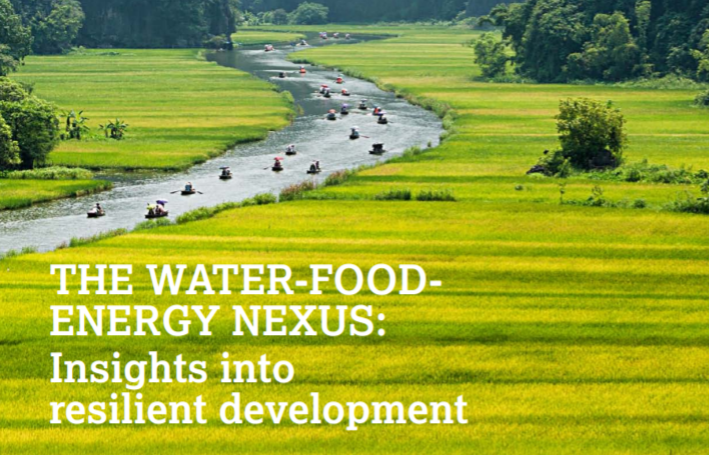
SAB Miller, & World Wildlife Fund. (2014). The Water-Food-Energy Nexus: Insights into resilient development.
This collaborative report looks at 16 countries or states, comparing the ways in which their development patterns have managed their different mixes of resources and different capacities to make use of those resources.
Executive Summary
WWF and SABMiller have a shared interest in strengthening the institutions that govern the way society manages and develops water, food and energy resources. For WWF, this is close to the heart of our mission: conservation is inseparable from the challenges of changing patterns of resource use. For SABMiller, this is a question of the viability of our business: good quality drinking water and agricultural products are vital for a brewing company – and essential for the societies within which we operate.
So the risk of resource scarcity is a shared risk. We see that shared risk becoming more acute under changing consumption patterns and demographic pressures. The ambitious drive towards rapid development has often missed a fundamental dimension of progress, which we believe is essential to enable us to respond collectively to shared risks. Building the resilience of our water, food and energy systems is an essential and neglected part of development. Resilience is the ability to withstand shocks and pressures, whether economic, climatic or demographic in nature. Ultimately both national development strategies and business strategies need to be designed around resilience.
Nexus policymaking is about designing resilient government or business strategies in ways that take account of the connections between food, water and energy systems. It starts by recognising the interdependence of those systems, and hence challenges single-sector approaches that can have substantial unintended consequences for a country’s future development options.
This report looks at 16 countries or states, comparing the ways in which their development patterns have managed their different mixes of resources and different capacities to make use of those resources. Nexus issues play out very differently in contexts with differing resource endowments, and this is only partially determined by the climate and physical availability of natural resources in a country. The country’s ability to make use of its natural resource base can be at least as important.
Decisions made in the early stages of development may lead to weak resilience at later stages. This is particularly seen in the evolution of both infrastructure and institutions for governing the use of natural resources. Developing and emerging economies have the opportunity to build resilience in from the outset.
Trade has often enabled countries to manage their own resource scarcity, offering one strategy for building a nation’s apparent resilience. However, in today’s interdependent globalised world, in which resource scarcity has impacts on a global scale, trade is no longer a trump card that can enable rich countries to buy their way out of managing resource risks directly.
From our research we have concluded that the most resilient economic systems combine robust infrastructure, flexible institutions and functioning natural capital. The case studies propose areas in which policymakers have particular levers for responding to nexus challenges in order to bring about resilience. They suggest policymakers should:
- Integrate all aspects of development planning, in particular ensuring that water, energy and agricultural sector planning are not done in isolation, but consider how each can contribute to the resilience of the others;
- Design institutions for resilience, in ways that strengthen cooperation and coordinated decision-making;
- Use economic and regulatory instruments to strengthen the incentives and requirements for building resilience into water, food and energy systems;
- Use trade, regional integration and foreign policy to manage nexus trade-offs more effectively, and contribute further to resilience at both country and global levels
